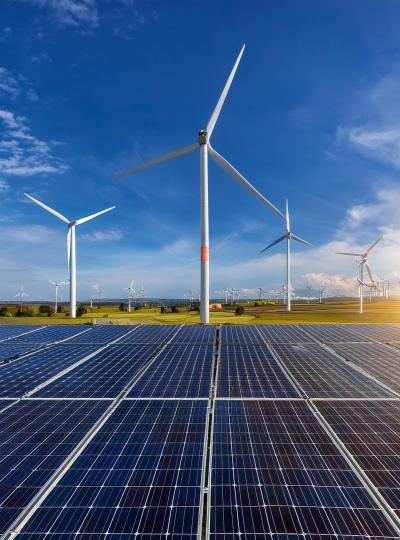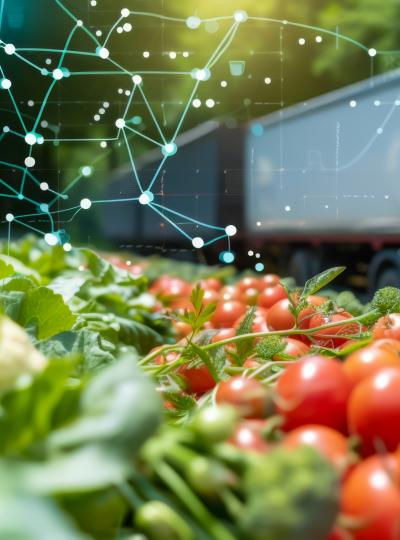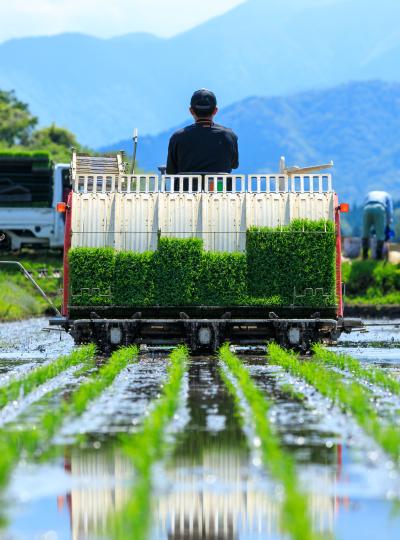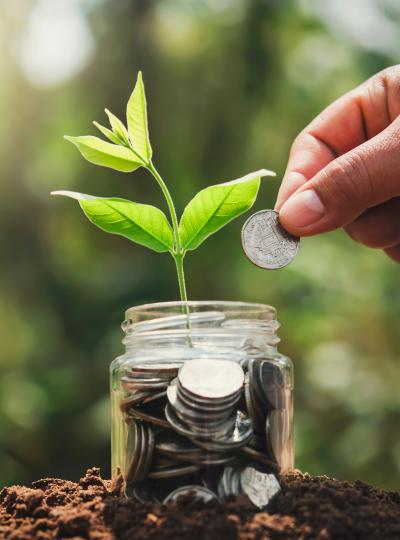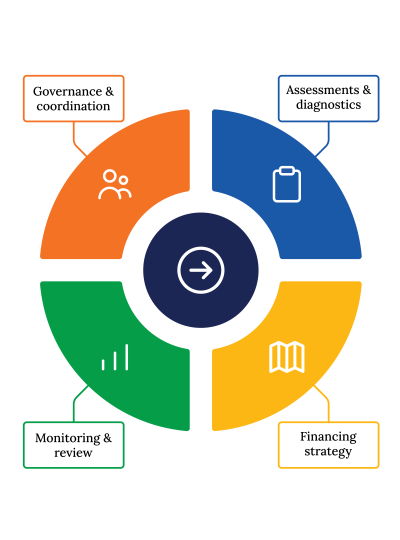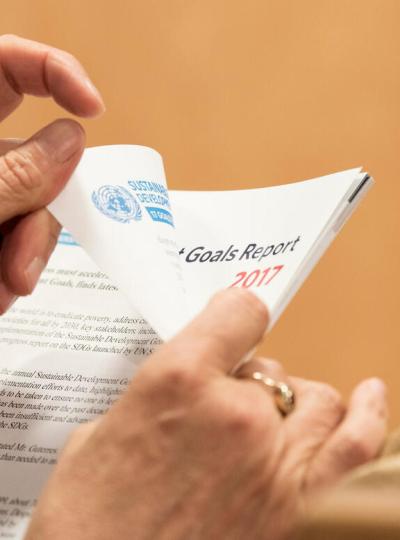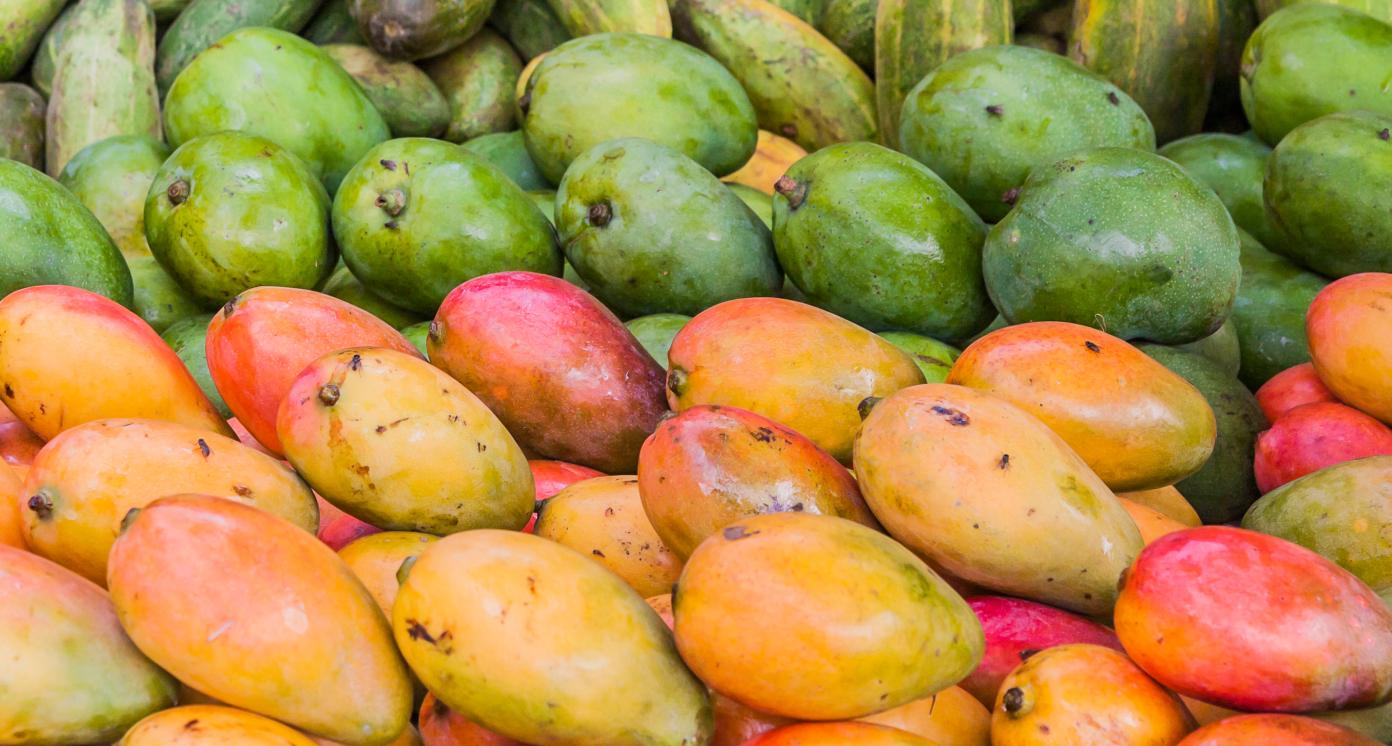Juice Processing
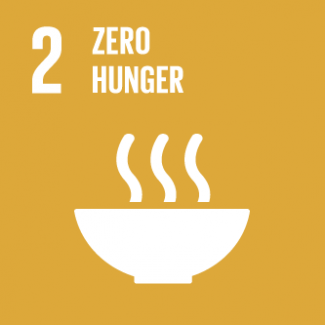
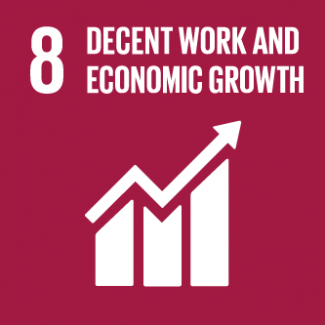
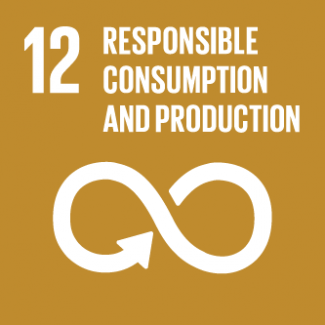
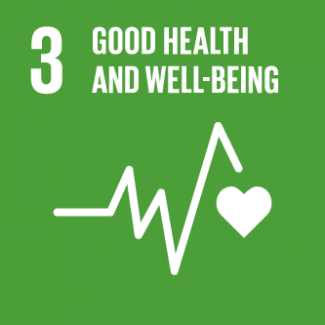
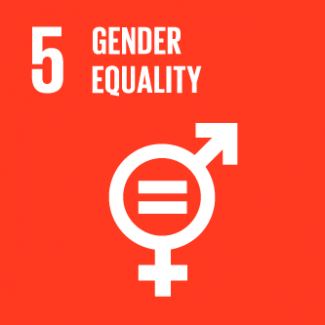
Business Model Description
Build and operate facilities for the processing and packaging of fruits and vegetables - such as mango, coconut, and pineapple - into juice for local and export markets. A mix ix of in- and out-grower schemes can be used to ensure consistent quality supply.
Expected Impact
Improved income for smallholder farmers through guaranteed markets and better pricing, while also resulting in better nutrition for the general population via access to more juice.
How is this information gathered?
Investment opportunities with potential to contribute to sustainable development are based on country-level SDG Investor Maps.
Disclaimer
UNDP, the Private Finance for the SDGs, and their affiliates (collectively “UNDP”) do not seek or solicit investment for programmes, projects, or opportunities described on this site (collectively “Programmes”) or any other Programmes, and nothing on this page should constitute a solicitation for investment. The actors listed on this site are not partners of UNDP, and their inclusion should not be construed as an endorsement or recommendation by UNDP for any relationship or investment.
The descriptions on this page are provided for informational purposes only. Only companies and enterprises that appear under the case study tab have been validated and vetted through UNDP programmes such as the Growth Stage Impact Ventures (GSIV), Business Call to Action (BCtA), or through other UN agencies. Even then, under no circumstances should their appearance on this website be construed as an endorsement for any relationship or investment. UNDP assumes no liability for investment losses directly or indirectly resulting from recommendations made, implied, or inferred by its research. Likewise, UNDP assumes no claim to investment gains directly or indirectly resulting from trading profits, investment management, or advisory fees obtained by following investment recommendations made, implied, or inferred by its research.
Investment involves risk, and all investments should be made with the supervision of a professional investment manager or advisor. The materials on the website are not an offer to sell or a solicitation of an offer to buy any investment, security, or commodity, nor shall any security be offered or sold to any person, in any jurisdiction in which such offer would be unlawful under the securities laws of such jurisdiction.
Country & Regions
- Sierra Leone: Northern Province
- Sierra Leone: Southern Province
- Sierra Leone: Eastern Province
- Sierra Leone: North-West Province
Sector Classification
Food and Beverage
Development need
Food security is a significant challenge in the country with 25-50% of the population facing some level of food insecurity (1). Despite the availability of fertile arable land, 75% remains uncultivated, and the country relies heavily (80% of foodstuffs consumed) on import (2). Farmers suffer from low yield and high cost of transport, as well as lack of access to financing. At the same time, agriculture is a critical part of the economy - providing many jobs and the largest portion of GDP (3). The fishery industry also suffers from overfishing, and illegal, unreported, and unregulated (“IUU”) fishing particularly by foreign fleets leading to sustainability challenges (4).
Policy priority
Food security and agriculture are a major focus for the government. Improvements have been made by development partners, national policies, and Apex Bank. The stated objective in the Mid Term National Development Plan includes policy interventions for improving financial access, better inputs, improved mechanization, promotion of research, and others (3). Environmental protection and sustainability are also considered. The Ministry of Agriculture and Forestry is focused on rice self-sufficiency, livestock development, crop diversification, and forestry management from a policy level.
Gender inequalities and marginalization issues
While women are proportionally more employed in agriculture, and there was a recent positive development with land reform so that women can now own land (5), there are significant inequalities in the value chain of higher value agricultural activities and women overall benefit less economically from this sector while also facing more challenges, such as lack of access to information and resources (6). Women are also more affected by malnutrition compared to men (6). In addition, agriculture is a major focus for all regions of Sierra Leone apart from the urban Freetown - which is far more developed than other regions. Rural areas are more marginalised overall with respect to food security, employment and health outcomes, despite being the main places where agricultural activities take place.
Investment opportunities introduction
Improving productivity and commercialization of the agricultural sector is a priority. The Agricultural Transformation Strategy plans to double production of rice, forestry, and livestock, as well as to increase the budgetary allocation to 10% to align with the Maputo Accord and attract external investment. Furthermore, in 2021 several policy shifts were announced by the Ministry of Agriculture and Forestry, aimed at increasing land under cultivation and improving yields through measures such as establishing a US$10 million agriculture credit fund to expand access to finance; e-wallet input delivery; mechanization promotion including through establishment of machine ring centers; and addition of e-extension services. The main opportunities seem to be in value added activities in processing, as well as various technological and mechanisation support activities to improve efficiency, yields, transport, market access and so forth (3).
Key bottlenecks introduction
Farmers suffer from low yield and high cost of transport, as well as lack of access to financing and insurance services. There is a low level of mechanisation and access to tools and equipment, such as irrigation (3). There have also been challenges with land ownership, especially for women (6). The fisheries industry also has a lack of infrastructure and value chain development (4). In terms of agro-processing, the level is low in the country, and there are only a few successful examples (3).
Food and Agriculture
Development need
Agriculture faces many challenges, including lack of mechanization and a high cost of production, lack of access to finance and insurance services, and lack of adequate storage facilities and processing, leading to more post-harvest losses. There is also a lack of access to improved seed, and the linkages between the manufacturing sector and primary sectors, such as agriculture, have been weak (3).
Policy priority
Agriculture is clearly stated as a major priority for the government in the Mid Term National Development Plan (3). In addition, the National Agricultural Transformation Strategy 2019-2023 includes more detailed plans, such as to double production of key crops (7). The Ministry plans for capacity building as well as a USD 10 million agriculture fund (3). There is also significant development agency support, such as from the FAO (8). The Government of Sierra Leone, through the Ministry of Trade and Industry (MTI), is implementing the Sierra Leone Agro-Processing Competitiveness Project with financing from the International Development Association (IDA) of the World Bank Group.
Processed Foods
Pipeline Opportunity
Juice Processing
Build and operate facilities for the processing and packaging of fruits and vegetables - such as mango, coconut, and pineapple - into juice for local and export markets. A mix ix of in- and out-grower schemes can be used to ensure consistent quality supply.
Business Case
Market Size and Environment
< USD 50 million
< 5%
The current market size of the pure juice market (not including soft drinks, syrups, etc. but only 100% fruits) is estimated at 25 million USD in Sierra Leone with an expected CAGR of 4.4% from 2023-2028 (12).
However, since fruit production could also be processed in other ways as well as consumed directly, the market could be over 200 million USD, when considering fruit production and processing as a whole. In addition, this does not consider the export market at this time, which could increase the value as well. Indications are that the markets are growing (9).
Indicative Return
20% - 25%
20% - 25%
Similar markets indicate that a 20-25% IRR is possible for juice processing, once developed (21). In addition, information from Sierra Agra, an organic and fairtrade juice processing, whole fruit sales and exporting company in Sierra Leone, indicates as much as 40% return on its investments (9) and nearby West African case studies have shown above 45% IRR in some case (22).
Global standards suggest that the 20-25% range of profit margin is reasonable for juice processing (13).
Investment Timeframe
Medium Term (5–10 years)
Fruit production in the country exists and new plantations do not take long to generate yields, which can be used as inputs into juice production (21). At the same time, the overall nascent nature of the Sierra Leone agricultural ecosystem presents several challenges to be overcome, thus pushing the timeline back by a few years over what would be expected in a more developed context.
Ticket Size
USD 500,000 - USD 1 million
Market Risks & Scale Obstacles
Business - Supply Chain Constraints
Market - High Level of Competition
Impact Case
Sustainable Development Need
70% of households in Sierra Leone are farming households, with 40% of households getting at least 30% of their total income from farming (15). Farmer income figures are limited but the median household income in Sierra Leone is USD 765 (16), and farmers have the lowest incomes on average.
For many fruits, such as mango, the production is higher than the demand with up to 75% of harvest wasted due to a host of challenges with market access (9).
The wastage of unconsumed crop leads to prevalence of flies in the farming communities, leading to various diseases (9).
Gender & Marginalisation
Women are more often the farmers in Sierra Leone, yet see less financial gain, and also suffer disproportionally from malnutrition (6). There is not detailed data available for all fruit production, but in mango production, 30% of farmers are women (9).
Expected Development Outcome
Juice processing can help improve and stabilize fruit farmer income through providing for more predictable demand and market access. The processors can also help the fruit farmers develop and access needed inputs and tools as it will benefit them as well in the long run, thus helping farmers improve productivity and income (9).
Juice processing creates predictable demand and links with established supply chains, so less fruit is wasted.
Juice processing reduces fruit waste resulting in less flies, and thus less fly borne diseases.
Gender & Marginalisation
Despite the national average of women farming mangoes being 30%, Sierra Agra has successfully incorporated 70% female farmers in their own supply chains, and their farmers have had a 7% annual increase in growth of income (9).
Primary SDGs addressed

2.3.2 Average income of small-scale food producers, by sex and indigenous status
National average income is USD 1,004 while median income is USD 765 in 2023 (16).
Proxy of agricultural sector growth of 6% (17).

8.1.1 Annual growth rate of real GDP per capita
The annual growth rate of GDP per capita for Sierra Leone was 1.3% at the last measured date in 2022 (23)
N/A

12.3.1 (a) Food loss index and (b) food waste index
Post harvest food loss in Sierra Leone is estimated to be as high as 40% (24).
N/A
Secondary SDGs addressed


Directly impacted stakeholders
People
Gender inequality and/or marginalization
Planet
Corporates
Public sector
Indirectly impacted stakeholders
People
Outcome Risks
Selling fruit directly to one or a few suppliers may lead to increased dependence on one market for the smallholder farmers, which can be a problem if that fruit processor fails, or even for price negotiation.
Impact Risks
While juice production is expected to improve farmer income, the overall challenges of the Sierra Leone context such as poor roads, poor infrastructure, lack of education, lack of finance, and so forth all create a risks for this investment and reduce chance of success unless mitigated (9).
A lack of credible and up to date data on farmers in Sierra Leone creates difficulties with measurement of actual impact.
A lack of access to tools and education by the farmers may compromise their production and yields and in turn create supply chain difficulties for juice production.
Impact Classification
What
Increased juice production in Sierra Leone leads to improved farmer incomes as well as improved nutrition.
Who
Smallholder farmers in the juice production value chain benefit from increased and more stable demand, leading to increased income. Consumers benefit from improved nutrition, and farming communities from economic and health improvements.
Risk
The overall ecosystem of Sierra Leone, such as lack of tools and education, lack of data, and challenges with infrastructure, may compromise success of such ventures.
Contribution
Juice processing means less fruit waste as well as allows for processors to help develop primary production with a guaranteed market, where otherwise direct farmer development interventions may not result in as significant impact.
Impact Thesis
Improved income for smallholder farmers through guaranteed markets and better pricing, while also resulting in better nutrition for the general population via access to more juice.
Enabling Environment
Policy Environment
The Mid Term National Development Plan 2019 - 2023 (3) has agriculture as a key policy area, and within this specifically mentions development of agricultural value chains as well as promotion of organic farming (which mango farming often is). The goal is to move up the value chain into more industrial activities which processing into juice is part of, although not mentioned explicitly.
National Agricultural Transformation Strategy 2019-2023 (7) plans to put agriculture at the centre of economic development and improve value chains as well as linkages between smallholder farmers and larger investments, which is relevant for juice processing.
Financial Environment
Fiscal incentive: Any business registered in Sierra Leone and having at least 20% Sierra Leonean ownership shall be entitled to corporate tax exemption including exemption from corporate income tax plus 50% exemption from withholding taxes on dividends paid by agribusiness companies and complete exemption from import duty on agricultural machinery (18).
Financial incentive: The Apex Bank and its Community Banks established in key rural areas targets smallholder farming groups, and micro and small-scale entrepreneurs, including women and youths, for financing (19).
Other incentives: The Sierra Leone Agribusiness Development Fund (managed by KPMG) was created to address financing and technical assistance challenges faced by agribusinesses that have plans to work with smallholder farmers in out-grower schemes (20).
Regulatory Environment
The Customary Land Rights Act, no. 20 of 2022 (5) provides for the protection of customary land rights, the elimination of discrimination under customary law, and the management and administration of land subject to customary law. This law now guarantees women’s equal rights and access to land and bans industrial development (mining, plantations, farming, and housing) in protected, conserved or ecologically sensitive areas (wetlands, wildlife habitats, steep slopes and old growth or virgin forests). This is important to be aware of if juice producers look to expand their farming operations.
Sierra Leone’s Income Tax and Finance Acts include income tax exemptions for 10 years from agricultural activities; exemption from import duty on farm machinery, agro-processing equipment, agro-chemicals and other key inputs; 125% tax deduction for expenses on Research and Development, training and export promotion (25).
Marketplace Participants
Private Sector
Sierra Agra, Capitol Foods - Sierra Juice, Kings Beverages, Dole/Sierra Tropical.
Government
Ministry of Agriculture and Forestry, Ministry of Trade and Industry, Ministry of Labour and Social Security, Ministry of Lands, Country Planning and Environment, Ministry of Finance and Economic Development.
Government
International Fund for Agriculture Development (IFAD), Food and Agriculture Organisation (FAO), World Bank, World Food Programme (WFP), African Development Bank (AfDB), European Union (EU).
Non-Profit
Concern Worldwide, National Association of Farmers of Sierra Leone, ActionAid, Word en Daad, FairMatch Support, Commercial Agricultural Producers and Processors Association.
Target Locations
Sierra Leone: Northern Province
Sierra Leone: Southern Province
Sierra Leone: Eastern Province
Sierra Leone: North-West Province
References
- (1) International Monatery Fund. 2022. Sierra Leone: 2022 Article IV Consultation and Fifth Review. Accessed from: https://www.imf.org/en/Publications/CR/Issues/2022/07/29/Sierra-Leone-2022-Article-IV-Consultation-and-Fifth-Review-under-the-Extended-Credit-521569
- (2) International Trade Administration. 2021. Sierra Leone - Country Commercial Guide. Accessed from: https://www.trade.gov/country-commercial-guides/sierra-leone-market-overview
- (3) Government of Sierra Leone. 2019. Sierra Leone’s Medium-Term National Development Plan 2019 - 2023. Accessed from: https://www.slurc.org/uploads/1/0/9/7/109761391/sierra_leone_national_development_plan.pdf
- (4) Government of Sierra Leone. 2021. Updated Nationally Determined Contribution (NDC). Accessed from: https://unfccc.int/sites/default/files/NDC/2022-06/210804%202125%20SL%20NDC%20%281%29.pdf
- (5) Government of Sierra Leone. 2022. Customary Land Rights Act. Accessed from https://faolex.fao.org/docs/pdf/sie212374.pdf
- (6) Food and Agriculture Organisation. 2018. Country Gender Assessment Series: National gender profile of agriculture and rural livelihoods, Sierra Leone. Accessed from: https://www.fao.org/documents/card/en/c/I9554EN/
- (7) National Agricultural Transformation. Strategy 2019-2023. Please note, Ministry website has been offline. Accessed information indirectly via: https://www.investinginsierraleone.com/agriculture-and-fisheries/#:~:text=In%20light%20of%20rises%20in,of%20Sierra%20Leone's%20economic%20development.
- (8) Food and Agriculture Organisation. Website. https://www.fao.org/sierra-leone/programmes-and-projects/ru/
- (9) IDH Sustainable Trade. 2019 Case Report Sierra Agra. Accessed from: https://www.idhsustainabletrade.com/uploaded/2019/11/SDM-Case-report-Sierra-Agra-Sierra-Leone-1.pdf
- (10) The Borgen Project. 2021. Juice companies in Sierra Leone empower farmers. Accessed from: https://borgenproject.org/tag/sierra-juice/
- (11) World Bank. 2021. IDA Private Sector Window Support for Dole Asia Holdings in Sierra Leone. Accessed from: https://www.worldbank.org/en/about/partners/brief/ida-private-sector-window-support-for-dole-asia-holdings-in-sierra-leone
- (12) Statista Website. Accessed from: https://www.statista.com/outlook/cmo/non-alcoholic-drinks/juices/sierra-leone
- (13) CSI Market Website. Accessed from: https://csimarket.com/Industry/industry_Profitability_Ratios.php?ind=505
- (14) MCE Social Capital. 2019. Portfolio Spotlight: Sierra Agra. Accessed from: https://mcesocap.medium.com/portfolio-spotlight-sierra-agra-763358f292ed
- (15) Food and Agriculture Organisation. 2018. RuLIS Country Brief. Accessed from: https://www.fao.org/3/cc0136en/cc0136en.pdf
- (16) World Population Review. 2023. Accessed from: https://worldpopulationreview.com/country-rankings/median-income-by-country
- (17) Republic of Sierra Leone. 2010. National Sustainable Agriculture Development Plan 2010-2030. Accessed from: https://www.gafspfund.org/sites/default/files/inline-files/SL_NSADP.pdf
- (18) SLIEPA. Available incentives. Accessed from: //www.sliepa.gov.sl/invest-in-sierra-leone/all-incentives
- (19) Emmanuel S. Gbakie, Brima Kamara and Patrick A.F. Dumbuya. 2017. New Rural Finance Institutions in Sierra Leone. Accessed from: https://cgspace.cgiar.org/bitstream/handle/10568/97182/EC3_Gbakie.pdf?sequence=1&isAllowed=y
- (20) KPMG Website. Accessed from: https://kpmg.com/ke/en/home/services/advisory/international-development-advisory-services/our-sectors-idas/agribusiness-sector/sierra-leone-agribusiness-development-fund.html
- (21) UNDP Stakeholder Consultations, April 25, 2023, May 10, 2023, and May 15, 2023.
- (22) Kadiri et al. 2016. Economic Studies on the Production of Fruit Juice from a Locally Sourced Fruit ‘African Star Apple’ . Accessed from: https://www.researchgate.net/publication/305568426_Economic_Studies_on_the_Production_of_Fruit_Juice_from_a_Locally_Sourced_Fruit_'African_Star_Apple'
- (23) World Bank website. Accessed from: https://data.worldbank.org/indicator/NY.GDP.PCAP.KD.ZG?locations=SL
- (24) WFP. 2022. Sierra Leone Annual Country Report 2022. Accessed from: https://docs.wfp.org/api/documents/WFP-0000147998/download/
- (25) SLIEPA Website. Available incentives in Sierra Leone. Accessed from: https://www.sliepa.gov.sl/invest-in-sierra-leone/all-incentives





